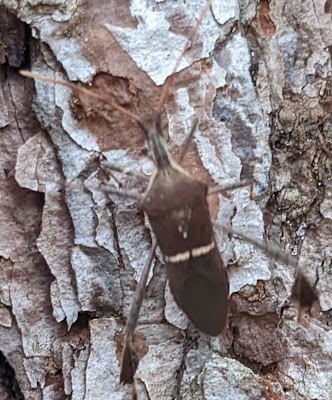Caterpillars, when their population numbers grow unchecked, can devastate a hemp or cannabis crop in a matter of hours.
 |
| Organic Hemp Cultivation Pest Control, Managing Eastern Tent Caterpillar Web Masses |
Last year there was a significant population bloom of the Eastern Tent Caterpillars, Malacosoma americanum in east Leon County. The thick, web masses began to appear during spring and continued to grow in size through summer into autumn, finally falling to the ground with winter winds and rainstorms.
Here across Arendell Hill we counted thousands of the Eastern Tent Caterpillars over the course of the growing season. They would crawl down from the safety of their web nests, across the ground and find any number of plants, including trees, to feed on, devouring blossoms, buds and leaves alike.
Our Myers lemons were hit especially hard from hungry caterpillar appetites.
Arendell Hill Nursery was not the only place infested with an over-population of the M. americanum, I encountered significant numbers of these caterpillars all across the city. Park benches placed around our local library green space were often covered in masses of M. americanum.
As autumn leaves fall, so often do Eastern Tent Caterpillar eggs. Their eggs are usually laid en masse around twigs, at the base of leaves. Winter storms often blow these egg masses to the ground where they become mixed with leaf litter and await warmer weather before hatching.
An important part of any organic based integrated pest management program is prevention. One way to control on-site Eastern Tent Caterpillar populations is through daily ground surveillance. Make it a habit to be on the lookout for fallen egg or web masses. When you come across the eggs or webs on the ground, pick them up, place in a trash bag, tie securely then drop the bag into the garbage can for landfill destination pick up.
Chances are the web masses may not actually contain eggs but chances are also they may.
Eastern Tent Caterpillar egg and web masses blend in well with fallen leaf litter. With a little practice one can soon find these well camouflaged potential future pest masses and begin disposing of in a convenient refuse container.
Much of the time the most successful organic pest control practices spring forth from common sense practices and an understanding of pest insect and bug life cycles.
Controlling Eastern Tent Caterpillars before they hatch is much easier than battling hoards of hungry pests.






